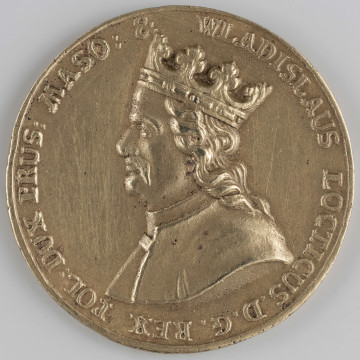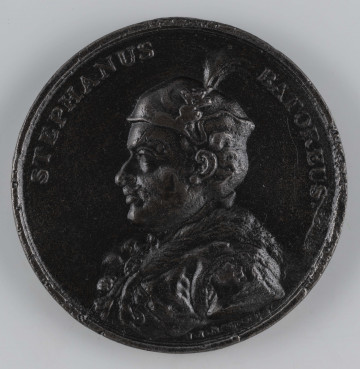
Władysław Łokietek - Kajetan Sołtyk's entourage
1790 — 1810
National Museum in Lublin
Part of the collection: Polish medallic art from the 16th to the 17th c.
The Ottoman Turks had posed a serious threat to Europe since the 14th century. Gradually conquering more and more extensive territories, they created a powerful empire. From the 15th century, Poland also found itself in the sphere of political interest of subsequent Turkish rulers. The conflicts with Turkey particularly intensified in the 17th century. At the end of that century, Poland entered a broad coalition of European countries fighting against the Ottoman threat. The Battle of Vienna on 12 September 1683 and the Battle of the Parklands three weeks later seriously curtailed the aggressive actions of Turkey but did not break them completely. Thanks mainly to the Austrian Habsburgs and the papacy, the Holy League was formed in 1684 and the Republic of Poland joined it. Its main task was to fight against the Ottoman Empire. The League set itself a critical goal to win the cooperation of Tsarist Russia. The issue of unsettled Polish-Russian relations made the negotiations problematic. Russia demanded that the Republic of Poland recognise the annexation of lands it had gained as the result of the 17th-century wars. After long negotiations, in 1686, an agreement was made between the two countries. It is referred to as the Treaty of Grzymułtowski, after the name of one of the main negotiators, voivode of Poznań Krzysztof Grzymułtowski, the Nieczuja coat of arms. For the price of an unfavourable peace treaty, John III Sobieski managed to win a supporter to fight against Turkey. The event was celebrated in a special way in Rome. It is reflected, among others, in the presented medal, commissioned by Pope Innocent XI and executed by Giovanni Battista Guglielmada. Although the artist worked for about twenty years for the papal court, he is mainly known for his works. His date of birth is unknown, and even the surname of this medallist is questionable, as he signed some works as Guglielmada. Significantly, on the medal in question, the artist honoured mainly John III Sobieski, to whom he dedicated the whole obverse. On the reverse, the King of Poland is again depicted together with Sophia Alexeevna Romanova, Regent of Russia. The couple is unanimously trampling a crescent representing Turkey. Also here, the artist paid tribute to John III Sobieski, giving him a sceptre, which Sophie Alexeyevna does not have.
Leszek Poniewozik
Author / creator
Dimensions
cały obiekt: width: 64,8 mm
Object type
medal
Technique
stamp minting
Material
brass
Creation time / dating
Creation / finding place
Owner
The National Museum in Lublin
Identification number
Location / status

1790 — 1810
National Museum in Lublin

1792 — 1797
National Museum in Lublin

1792 — 1797
National Museum in Lublin
DISCOVER this TOPIC
Castle Museum in Łańcut
DISCOVER this PATH
Educational path